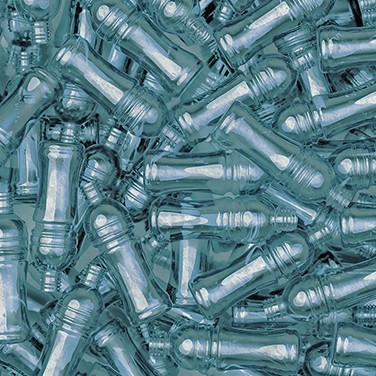Is “BPA-Free” Worry Free?
By Christina Phillis
The “BPA-free” label on food containers has been a symbol of safety since 2008, indicating products that don’t contain the harmful chemical bisphenol A (BPA). Various studies have shown that BPA can cause negative reproductive, developmental, and metabolic effects in animals. But now that we’ve replaced our plastic water bottles with BPA-free options, we’re starting to learn that these alternatives may not be healthier after all.
An Accidental Discovery
While studying the reproductive effects of BPA in mice, researchers at Washington State University noticed something strange. Even though the test group of mice was exposed to BPA and the control group was not, the differences between the two groups started to disappear. The control group also displayed genetic issues.
The plastic cages housing the mice were damaged during use and started to leach bisphenol S (BPS), one of the chemicals used in BPA-free plastic products. This led the research team to look at the effects of BPS and other BPA alternatives.
Studies like these demonstrate a significant problem related to chemical alternative selection. In this case, BPA replacements like BPS, BPF, BPAF, BPZ, and BPP share the same basic chemical bisphenol structure and can produce similar physiological effects.
Evaluating One Alternative
A University of Missouri (MU) study published in the Proceedings of the National Academy of Sciences looked at the effects of BPS on pregnant mice.
In the study, mice were exposed to either BPA or BPS for two weeks and then bred. When the embryos were 12.5 days old, placental samples were collected and compared to the placentas of unexposed control animals.
"Synthetic chemicals like BPS can penetrate through the maternal placenta, so whatever is circulating in the mother's blood can easily be transferred to the developing child," said Cheryl Rosenfeld, a professor of biomedical sciences in the College of Veterinary Medicine, investigator in the Bond Life Sciences Center, and research faculty member for the Thompson Center for Autism and Neurobehavioral Disorders at MU. "This mouse model is the best model we have now to simulate the possible effects of BPS during human pregnancy, because the placenta has a similar structure in both mice and humans."
"“Synthetic chemicals like BPS can penetrate through the maternal placenta."
– Cheryl Rosenfeld
The MU team found that exposure to either BPA or BPS altered the expression of 13 identical genes, led to reduced serotonin concentrations, and produced other changes.
The placenta is a primary source of serotonin for the developing brains of both human and mouse fetuses. Serotonin affects mood but can also impact sleeping, eating, and food digestion.
"The placenta responds to both natural chemicals as well as synthetic chemicals that the body misinterprets as natural chemicals, but the body doesn't have the ability to mitigate the detrimental effects of such industrial-made chemicals," said Rosenfeld. "More importantly, these chemicals have the ability to lower the placenta's serotonin production. Lower levels of serotonin can compromise fetal brain development because during this critical time in development the brain relies on the placenta to produce serotonin. Thus, developmental exposure to BPA or even its substitute, BPS, can lead to longstanding health consequences."
Mixed Results
As we learn more about the negative effects of BPA-free products, the risks of BPA are still up for debate. Most BPA-free products were developed in response to pressure from consumers. The FDA has banned its use in baby bottles, sippy cups, and infant formula packaging, but maintains that exposure to low doses of BPA causes no adverse effects. Independent academic research has demonstrated the opposite.
As subsequent studies determine the true effects of these chemicals over time, the best alternatives may involve no plastic at all.
